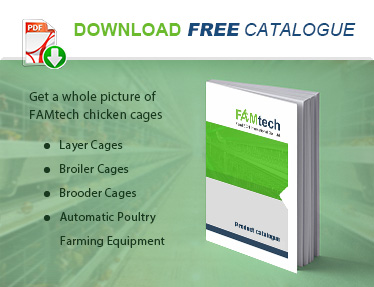How To Raise Chickens In A Broiler Cage System?
A broiler cage system is a highly efficient chicken-raising system. It can not only save labor but also improve efficiency. The main components of the broiler cage system are the chicken house, broiler cage, feeding and drinking system, climate control system, and chicken manure removal system. The whole system promotes the delicacy of management and brings chicken breeding to a higher level.
Many farmers may wonder how to raise chickens in the broiler cage system to get a satisfactory result, that is, a high meat ratio while keeping low mortality. Today, we will focus on several key aspects when raising and managing chickens in a broiler cage system.
Breeding management
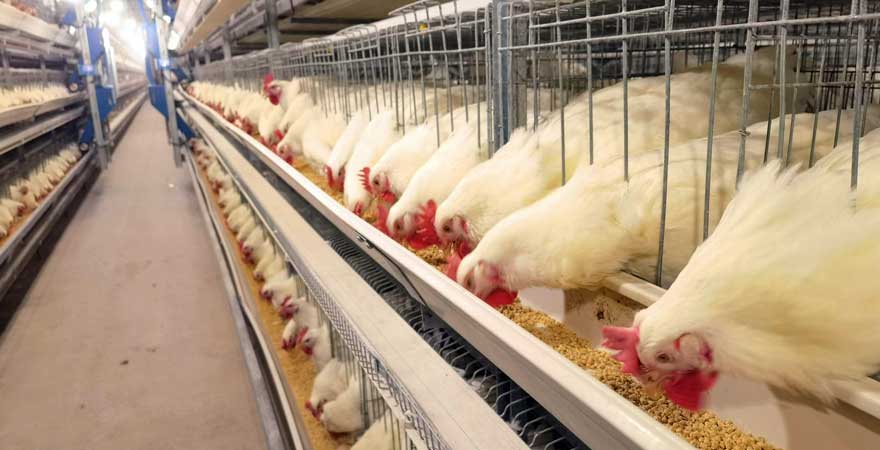
Grouping chickens
Grouping aims at ensuring even feed and even weight growth of broilers. The principle is to place the stronger chickens at the bottom tier of the battery cage, while the weaker ones are in the middle and upper tiers. The first time grouping ought to be when chickens are 12 to 16 days old. The second time grouping is suggested to happen when chickens are 25 to 28 days old.
Considering the weather conditions, the grouping method is different. When it is hot, the chicken grouping is in advance for heat dissipation. When it is cold, it is delayed for warmth retention.
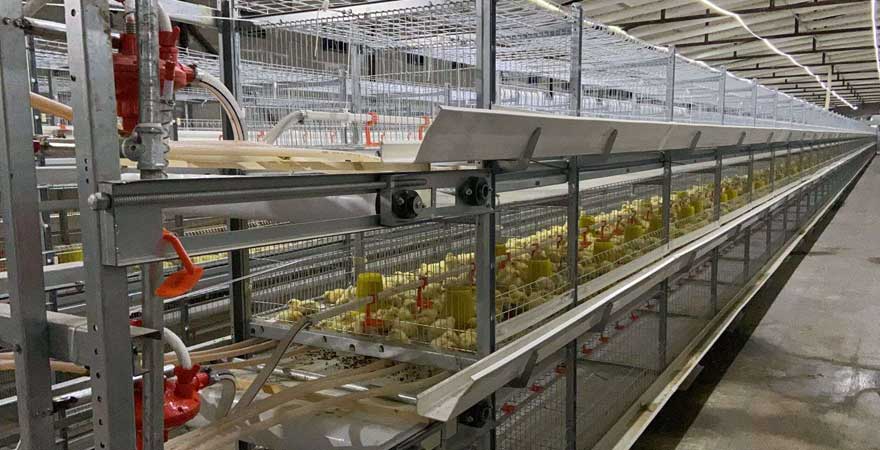
Preheating
The temperature of the chicken house is preheated to address the temperature differences of the top, middle, and lower parts of broiler cages, which may change as the outdoor temperature changes. It usually happens 2 to 4 days before putting chickens in the cage.
Drinking
Water at an appropriate temperature is needed for chickens within 2 hours following the broiler entering the chicken house. Adjust the height of nipple drinkers and the water pressure to the most suitable condition, avoiding two high or too low. Also, the water supply should be continuous without interruption. It is suggested to add glucose and vitamins to the water. Appropriate addition of medicine is also advised on the second day.
.jpg)
Feeding
Feed the chicks in 2 to 3 hours following drinking. Fill the chicken feed in the feeder for them to eat freely. Feed less but more frequently to prevent the feed from going moldy.
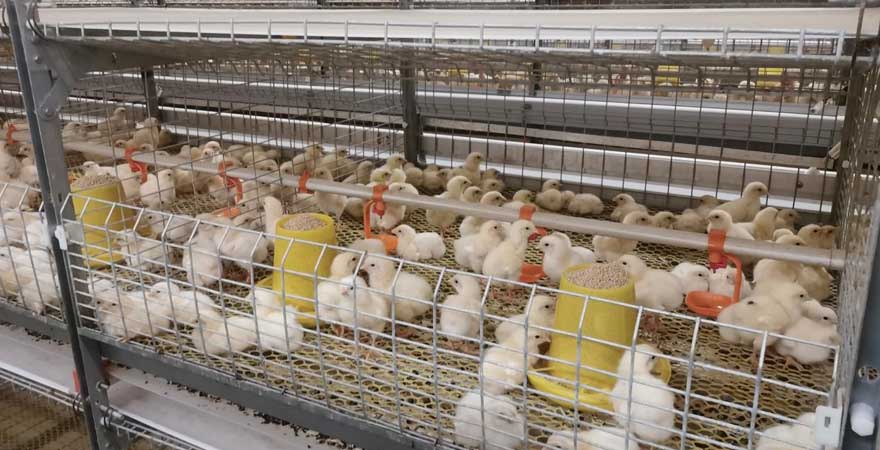
Disease control
Disease control needs special attention when raising chickens in a broiler chicken cage. Medicine given to broilers should be less toxic, such as norfloxacin, gentamicin, and amoxicillin etc. These kinds of medicine can prevent chickens from pullorum disease. Apply ceftriaxone, levofloxacin, and amikacin to prevent colibacillosis.
Disinfect
Disinfecting the broiler cage system is usually carried out with chickens in it; thus, choosing a disinfectant that is low-irritating and has no special odor is important. In winter, disinfect once every week. In spring and autumn, make it twice a week. In summer, disinfect every day. Generally speaking, the disinfection effect is best when the temperature is 25℃ in the chicken house.
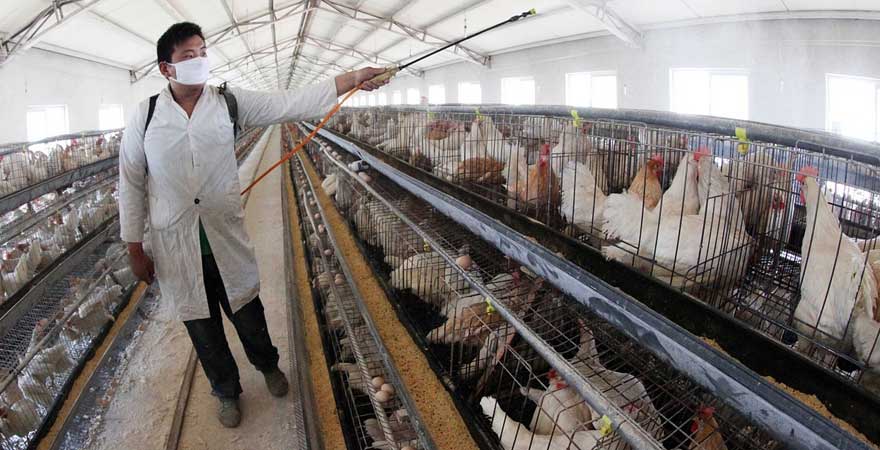
Climate control
Temperature control
After the chicks are put in the chicken house, the temperature needs to reach 32-34℃. In the first week, the temperature was lowered by 0.4 degrees per day. Then the temperature of the chicken house reaches 30-31℃. Continue to lower the temperature by 2 degrees every week. Please note that the temperature of the cage system needs to be lower than the floor housing due to the higher density.
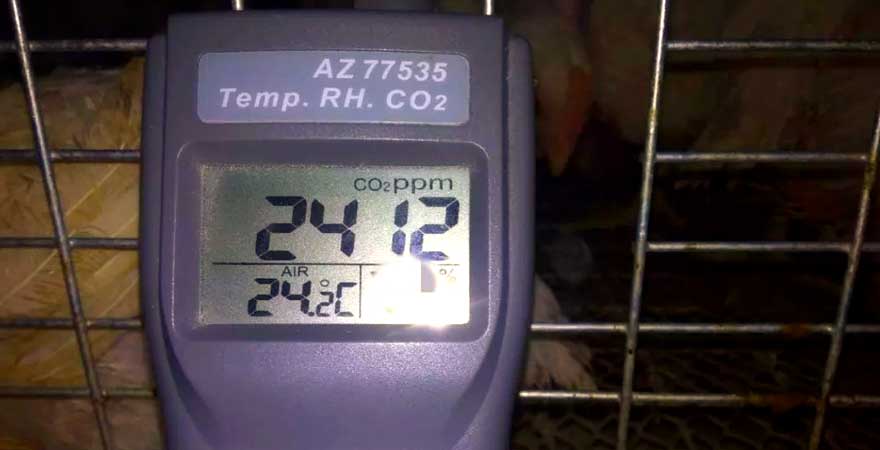
Humidity control
Moderate humidity in the chicken house can not only prevent dehydration of the chicken, but also make the temperature uniform. Generally speaking, humidity must be more than 50%. While too high humidity might impair the cardiovascular system's ability to transmit blood and oxygen, too low humidity can lead to respiratory disorders. For chicks under one week old, the relative humidity in the chick housing should normally be kept at about 65%.
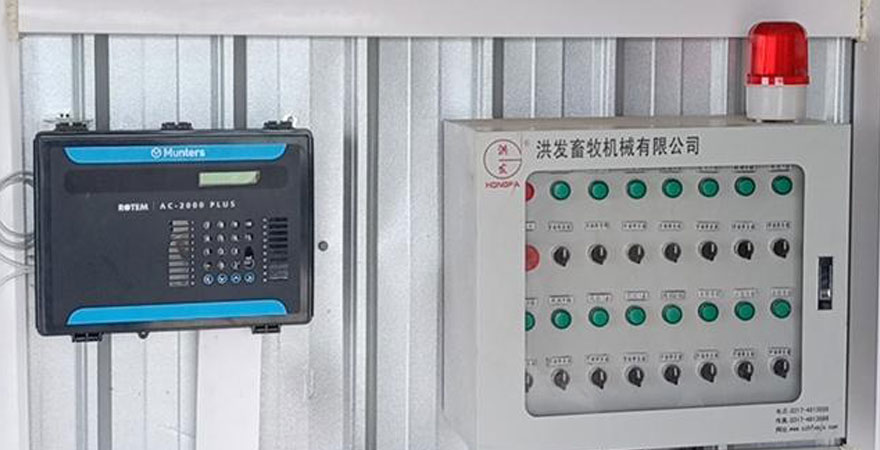
(1) Brooding period
The humidity in the brooding period should be maintained at 60-65%. To increase the humidity in the brooding period, several basins of water can be placed in the brooding area to increase the humidity in the air through evaporation. Regular disinfection can also be used to increase the humidity in the brooding period. It is not recommended to increase the humidity in the broiler house by sprinkling water on the ground or installing sprinklers.
(2) Growing period
The humidity in the broiler house during the growing period should be maintained at 40-60%. Appropriate humidity is conducive to the normal growth of broilers. The humidity should not be too high or too low. If the humidity is too low, it can cause dehydration of broilers, poor feather growth, dry skin, dust flying in the air, and an increased susceptibility to respiratory diseases. If the humidity is too high in summer, it is easy to cause the evaporation and heat dissipation of the chicken body to be blocked, the feed intake is reduced, the water intake is increased, and heatstroke is caused. In winter, if the humidity is too high, the chicken's body will lose too much heat, the feed intake is increased, the feed consumption is increased, the feed-to-meat ratio is increased, and the breeding cost is increased.
Light control
The light intensity of cage-raised broilers is the same as that of those raised on the ground or on the net; that is, during the brooding period, a light intensity of 10–20 LX is used, and 10 LX is generally suitable (unit of light time: 20 lux is equivalent to 3.3 watts/m, and 10 lux is equivalent to 1.7 watts/m).
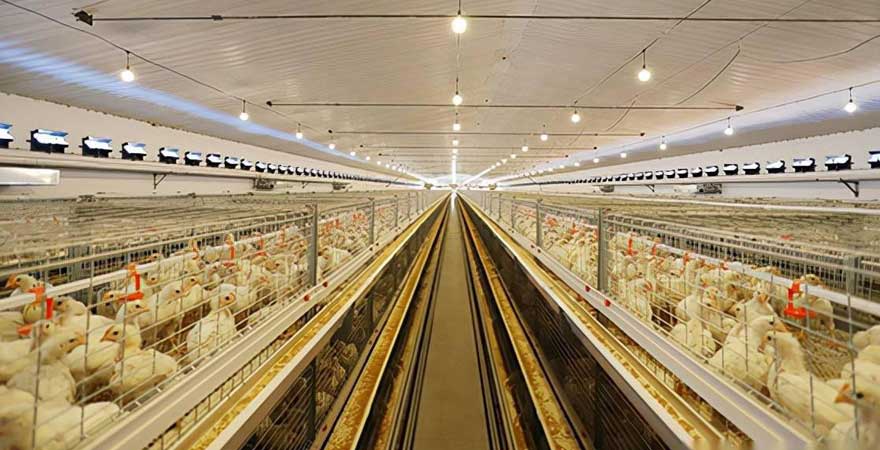
Ventilation control
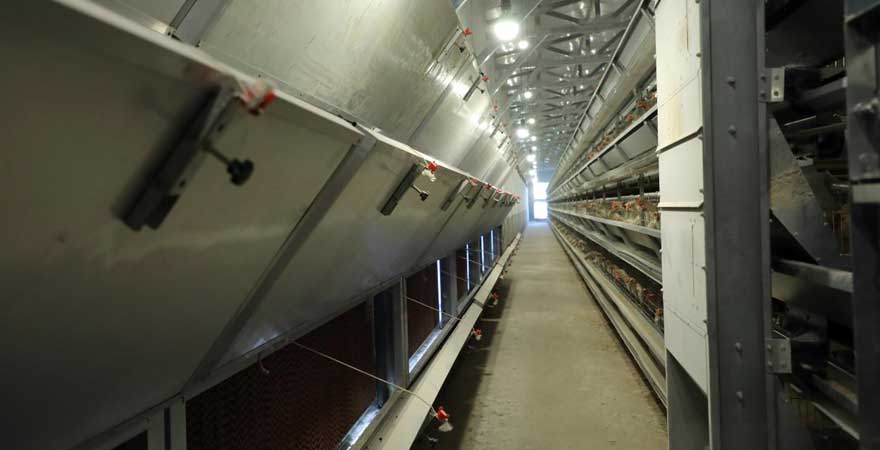
(1) Brooding period
The temperature in the chicken house should not be lowered while ventilation is taking place because the brooding phase necessitates a consistent temperature. This conflict can be resolved in a standardized caged broiler house by installing a thermostat. Ventilation and air exchange in the chicken house can be accomplished by regulating the fan's opening and closing. During brooding, the fan is set to open at 35°C and shut off at 33°C. This means the fan automatically turns on when the temperature inside the house is above 35°C and automatically turns off when the temperature drops below 33°C. Also, open the windows on both sides of the chicken house during the day and night to increase ventilation and prevent hypoxia caused by insufficient ventilation.
(2) Growing period
As the chicks age, the temperature setting value on the thermostat is continuously adjusted. For example, after 21 days of age, the temperature difference between the opening and closing of the fan is set to one degree; that is, the opening temperature of the fan is 27°C, and the closing temperature is 26°C. By turning the fan on and off in the chicken house, the ventilation volume in the chicken house is controlled to ensure that there is sufficient oxygen in the chicken house without odor.
Equipment management
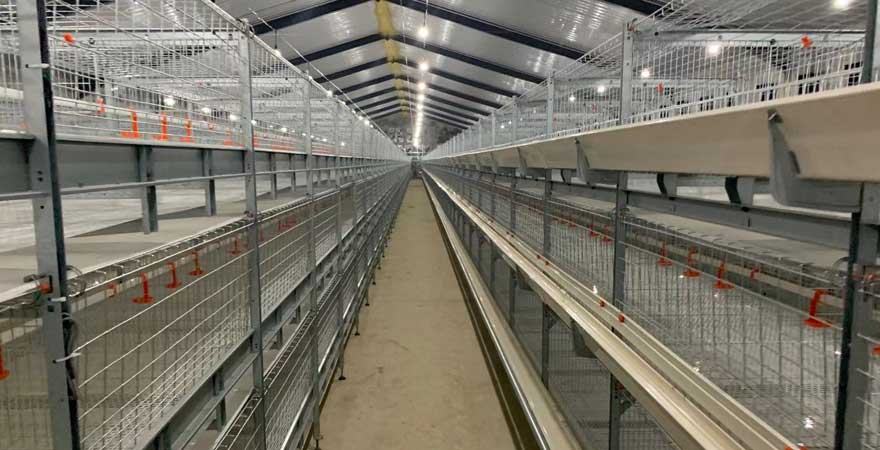
The operator must not only be familiar with the principles of the equipment but also observe it regularly. Firstly, regularly check the ventilation, temperature, and feed system in the chicken house, ensuring normal operation. Secondly, change or repair the damaged equipment, avoiding production interruptions due to equipment failure. In addition, disinfect the equipment regularly to prevent the growth of bacteria and viruses.

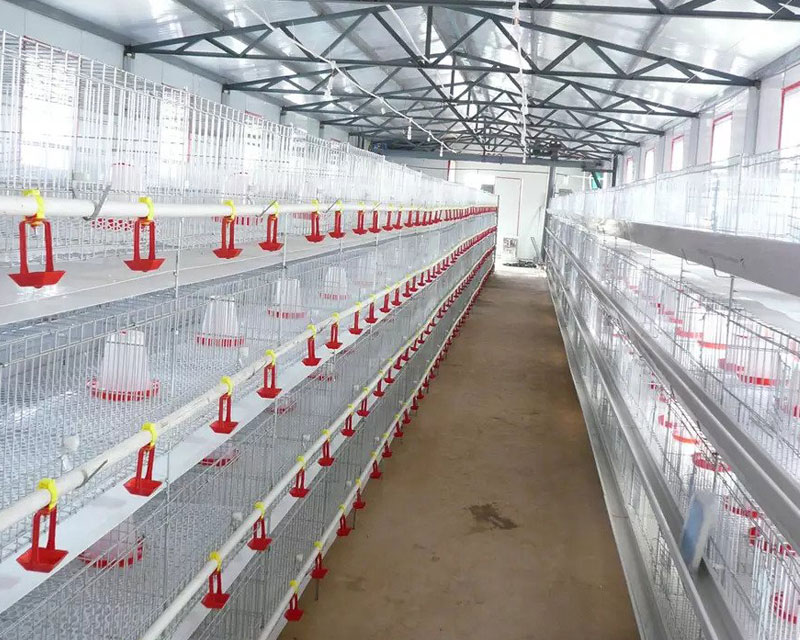 4 Tier H Type Broiler Cage Project In South Africa
4 Tier H Type Broiler Cage Project In South Africa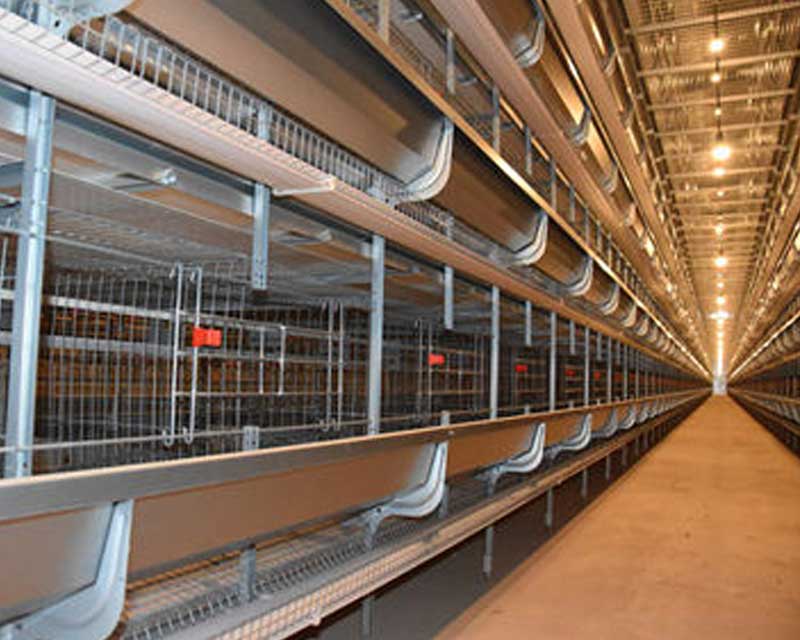 Layer Cage Project In Cuba
Layer Cage Project In Cuba H Type Layer Cage Project In Southeast Asia
H Type Layer Cage Project In Southeast Asia A Type Layer Cage Installed In West Africa
A Type Layer Cage Installed In West Africa Nigeria H Type Layer Cage Project
Nigeria H Type Layer Cage Project H Type Layer Cage Installed In Togo
H Type Layer Cage Installed In Togo